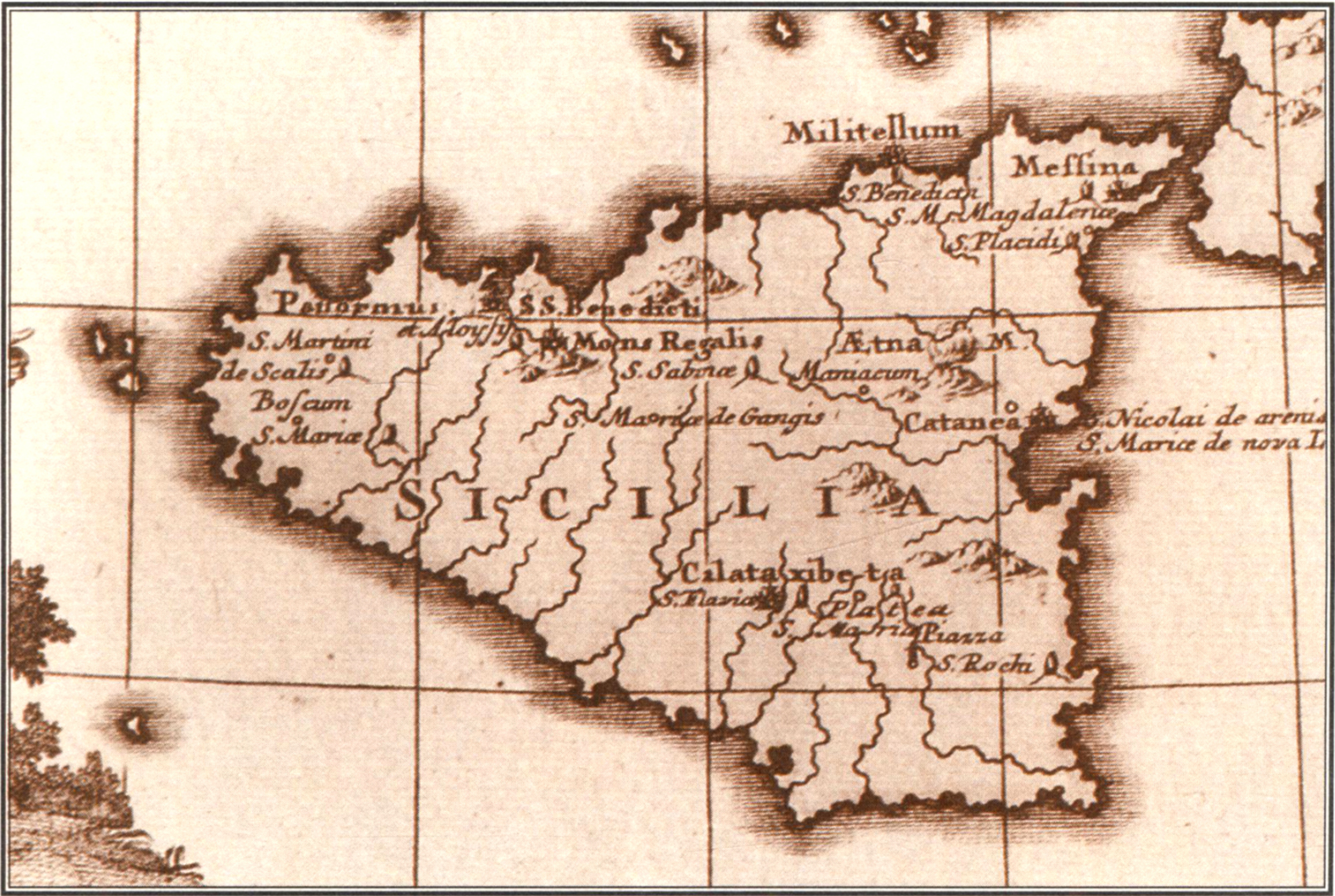P remessa
(Foreword)
W riting about Italian food always appealed to me tremendously, but, aside from passion, there was never solid justification to do sountil, in the fall of 1992, I had the unique opportunity to work with Wanda and Giovanna Tornabene, a mother and daughter who live in the remote interior mountains of Sicily in a restored fourteenth-century Benedictine monastery where they operate an extraordinary restaurant. If I had any reservations about this undertaking, they vanished at my first meeting with the Tornabenes in New York when Giovanna told me, For this book, we will let our hearts talk. They kept that promise.
Wanda, the charming matriarch of the family, is diminutive, with short blond hair and a winning smile. A dynamic personality, she also possesses a fiery temper and an enthusiasm for life that is contagious. I came to regard her as a spirited heroine, a Sicilian Karen Blixenproud, courageous, enterprising, stubborn, wise, nature loving, and wonderfully eccentric, witty, and fun.
Green-eyed Giovanna, also blond and petite with a radiant smile, is exremely bright and genial with a keen sense of humor. Fiercely loyal and somewhat shy, she prefers to remain quietly in the background. Her refrain is, Mamma is the star. I am the happy stage manager in our production of life.
Wanda and Giovanna spent the fall and winter accumulating and working on their recipes. I arrived in Sicily the following May to live and work with them for a monththe first of four such visits. At the time, Wanda spoke no English and my Italian consisted only of kitchen, food, restaurant, and shopping vocabulary, so throughout our collaboration, Giovanna was the consummate translator, with ever enthusiastic responses to Wandas Che dice? or my What did she say?
Just reaching Gangivecchio, in the northeast inland Madonie Mountains, roughly halfway between Palermo and Taormina, is a rather daunting, if fascinating two-hour pilgrimage. Its necessary to follow a network of small roads that turn and climb and dip through breathtaking views over expansive valleysa dramatic geography of extremes dotted with shepherds with their flocks of sheep, grazing cattle, isolated farms, and stone house ruins. In the spring vast patches of green pastures, rose-purple sulla, yellow ginestra, and red poppy fields carpet the landscape. In the fall the panorama is transformed into a sepia canvas. Eventually, across an enormous valley, the startling sight of the ancient town of Gangi appears. Its buildings completely cover the cloche-shaped slopes of Monte Marone like a gigantic, intricately carved piece of ivory.
From Gangi, its only a short distance to Gangivecchio, where I had my first meal in Wanda and Giovannas magical restaurant. It began with creamy black olive and tuna pts on grilled bread (crostini) and anchovy fritters as antipasti, followed by two pastas: one with a red saucea sumptuous blend of eggplant and tomatoes; then one with a green saucean unusual five-nut-based pesto that became one of my favorite Gangivecchio dishes. A buttery-textured, intense-flavored veal involtini stuffed with bread crumbs and cheese came served with slightly bitter-tasting fresh wild greens and spicy stewed and sauted potatoes. Desserts were the best-imaginable cannoli and Wandas splendid sofficini, light-as-air, square little pastries filled with lemon pastry cream.
That meal, I soon discovered, was typical of the Tornabenes singular style of delicious Sicilian cooking, whether in the restaurant or their home dining roomstraightforward, well balanced, and extremely flavorful. Individual dishes are wondrous blends of foods and textures, such as fragrant pasta with cauliflower, pine nuts, raisins, and saffron; anelletti al forno, a luscious baked timbale of pasta with veal and vegetables; and other remarkable offerings, like a two-inch-thick slab of swordfish roasted on bay leaves with an oregano-and-bread-crumb topping, drizzled with lemon juice and olive oil.
The Tornabenes is a flexible, robust cuisine, created in an alliance with nature, but one that is uncomplicated and easy to translate into the American kitchen. It is a universally appealing Sicilian version of regional comfort food.
Beyond the recipes themselves, I was introduced to the Madonies incredible ferla mushrooms, one of the worlds greatest and least-known species, as well as estratto, a pungent concentrated paste extract of tomatoes. The Tornabenes exuberant, basic old-fashioned cooking also taught me sensible techniques and practices, such as using Parmesan cheese rindsnormally discarded as uselessin sauces, soups, and ragus, to impart a subtle flavoring. I quickly came to appreciate the rewards of their inherently fundamental cooking style. Wandas












